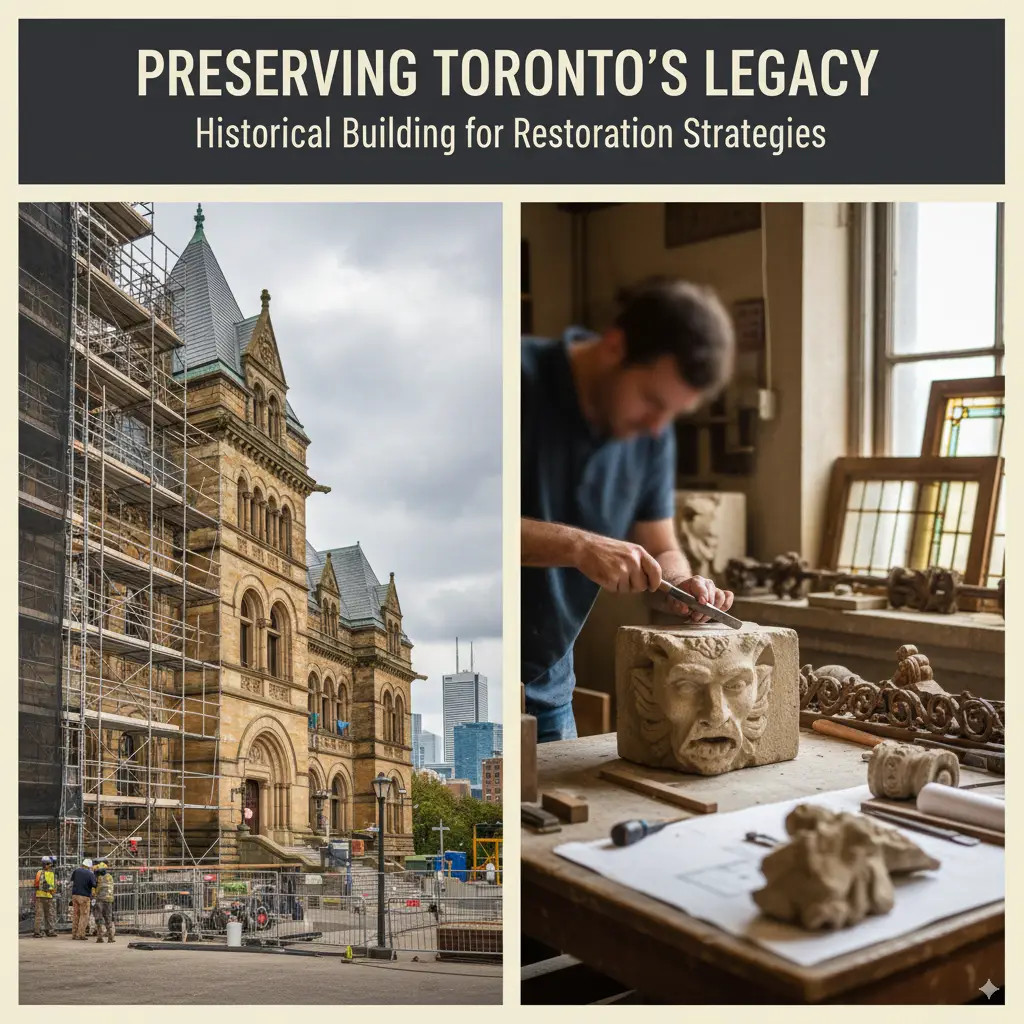Toronto’s architectural landscape is a rich tapestry of history, with structures that tell the stories of the city’s evolution. From the grandeur of the Bank of Toronto building to the intricate details of Old City Hall, these edifices are more than just buildings; they are cultural treasures. However, the passage of time, environmental factors, and urban development pose challenges to their preservation. This is where expert historical building restoration becomes crucial.
Table of Contents
ToggleUnderstanding Historical Building Restoration
Historical building restoration involves returning a structure to its original condition, preserving its historical and architectural significance. This process differs from renovation, which may involve altering the building to suit modern needs. Restoration focuses on maintaining the building’s authenticity, ensuring that future generations can experience its original charm.
In Toronto, the city’s Planning and Heritage Preservation Office provides guidelines and resources for property owners interested in restoring historical buildings. These resources include information on heritage conservation districts, the Heritage Register, and available financial incentives.
Key Strategies for Effective Historical Restoration
Research and Documentation
Before commencing restoration, it’s essential to research the building’s history. This includes understanding its original design, materials used, and any alterations made over time. Documenting these aspects ensures that the restoration is accurate and respects the building’s historical context.
Material Authenticity
Using original or historically accurate materials is vital in maintaining the building’s authenticity. For instance, the Don Valley Brick Works supplied bricks used in constructing many well-known Toronto landmarks, such as Casa Loma and Massey Hall. Restoring these materials preserves the building’s original character.
Skilled Craftsmanship
Restoration often requires specialized skills, such as masonry, carpentry, and metalwork. Engaging artisans experienced in traditional techniques ensures that the restoration work aligns with the original craftsmanship.
Structural Integrity
Assessing and reinforcing the building’s structural elements is crucial. This may involve repairing foundations, replacing deteriorated beams, or stabilizing walls to ensure the building’s longevity.
Modern Integration
While preserving historical elements, it’s also important to integrate modern systems, such as electrical wiring and plumbing, in a way that doesn’t compromise the building’s integrity. This balance allows the building to meet current standards while retaining its historical charm.
Benefits of Historical Building Restoration
Cultural Preservation: Restoring historical buildings helps maintain the city’s cultural heritage, providing future generations with a tangible connection to the past.
Economic Revitalization: Restored buildings can increase property values and attract businesses, contributing to the local economy. For instance, the revitalization of the Don Valley Brick Works has transformed it into a community and cultural centre, showcasing adaptive reuse of historical buildings.
Environmental Sustainability: Restoration is an environmentally friendly alternative to demolition and new construction. It reduces waste and preserves resources by reusing existing materials and structures.
Notable Restoration Projects in Toronto
Mackenzie House: The former home of William Lyon Mackenzie, the first mayor of Toronto, has been restored to reflect Victorian-era urban life. It now serves as a museum operated by the City of Toronto’s Museum and Heritage Services.
Don Valley Brick Works: Once an industrial site, it has been transformed into a community and cultural centre, showcasing adaptive reuse of historical buildings.
Conclusion
Historical building restoration is more than just a construction project; it’s a commitment to preserving Toronto’s rich architectural heritage. By employing expert strategies and adhering to preservation guidelines, we can ensure that these structures continue to tell their stories for generations to come.
For property owners interested in restoring historical buildings, it’s advisable to consult with professionals experienced in heritage restoration and to familiarize themselves with the resources and guidelines provided by the City of Toronto’s Planning and Heritage Preservation Office.
















